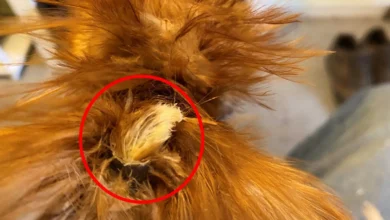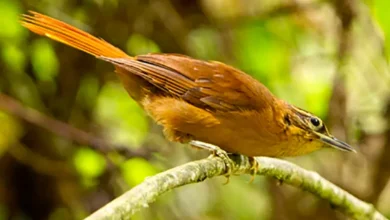The Hooded Mountain-toucans (Andigena cucullata) is a resident (non-migratory) South American toucan with a small range in northwest Boliva and far southern Peru (Puno).
This shy bird inhabits the humid epiphyte-laden cloud forests on the east side of the high Andes.
Alternate (Global) Names
Chinese: ????? … Czech: Tukan kápovitý, tukan kápový … Danish: Hættebjergtukan … Dutch: Zwartkopbergtoekan, Zwartkop-bergtoekan … German: Schwarzkopftukan, Schwarzkopf-Tukan … Finnish: Huppuvuoritukaani, vuoritukaani … French: Toucan à capuchon … Italian: Tucano di monte dal cappuccio, Tucano montano monaco … Japanese: kibashiyamaoohashi … Norwegian: Hettetukan … Polish: andotukan czarnoglowy, andotukan czarnog?owy … Russian: ???????????? ???????? … Slovak: tukaník kapucnový … Spanish: Tucán Encapuchado, Tucán Morado de Pico Verde … Swedish: Kapuschongbergstukan
Hooded Mountain-toucans Description
The Hooded Mountain-toucan has a long, greenish yellow bill that is black tipped with an oval black spot near the base of the lower bill. The head is dark blue in color, except for the bare skin around the eyes and thin blue partial collar on the nape.
The back is rich chestnut fading to green and yellow. The plumage below is a darker green to black with a chestnut vent.
This species’ vocalizations are described as short, harsh calls.
Breeding / Nesting
The mating ritual is a fun-loving affair for toucans, as they throw fruit to one another.
Like all of their other activities, nesting happens high up in hollow areas in trees. The bill is not effective for digging or any other type of extensive excavation work and so they must rely on holes already formed by other means.
The nests are not lined, but the two to four shiny white eggs that are laid each year rest on a few wood chips created while enlarging the opening or on various kinds of regurgitated seeds collected for this purpose.
Parents share equally in incubation duties, but rarely sit on the nest for more than an hour at a time and the eggs are often left uncovered. Both parents share in feeding fruit to the babies for up to 8 weeks.
After 16 days the nestlings are born blind, with no trace of down on their pink skin. The bill is unremarkable until about 16 days old when it takes on the distinguishing features of the toucan, and requires up to four months to develop fully. Feathers begin to expand at 4 weeks.
Babies have pads on their elbows that protect their feet by keeping them elevated until they fledge.
Breeding in captivity requires attention to a number of details. Even successful breeders report rates as low as 30% for the incubation of eggs.



